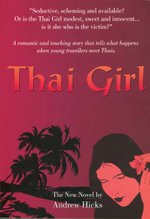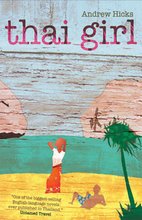
The Princess smiles down on the sweet faced rice dancer.

The rice harvesters dance symbolises hope for the future.

There are carrots too but the stick strikes out the timing.

The little ones work on their suppleness.

A still photo makes it look so easy,

But each move has to be as smooth as flowing water.

Rapt concentration. Now spot their feet!



Dancing gives these children a life and multiple skills.

An adolescent becomes apsara incarnate at Banteay Srei.

Health education in the village, unglamorous but so essential.

Anticipation adds to the pleasure but there is always something particularly special in the unexpected.
At the end of a very rewarding week in Cambodia, there could be nothing more to top what we’d already seen. The promised visit to a small dance school near the Angkor temples could surely not be the highlight of all we’d so far experienced but it was to be exactly that.
As we drove out towards the ancient Khmer temple of Banteay Srei we passed through fertile rice fields and neat villages, slumbering in the prosperous glow of harvest time. The road passed under spreading trees and the many farm houses were well built and brightly painted, but then things began to change.
After we’d passed the turn to the temple, I was aware that there were fewer farms and trees, but instead areas of barren scrub and long views to the distant hills. This was a much poorer place and it was here that we found the dance school.
We had come to see the work of the Nginn Karet Foundation for Cambodia (www.nkfc.org), a privately financed foundation that has been working in the area for more than ten years. It supports fourteen poor villages, aiming to promote sustainable development and the provision of basic needs for a self-reliant rural community through a range of projects. First we saw one of the schools they had built, an attractive small primary school with three classrooms, and then went on to watch a health education project in full swing.
Mention government spending on public health and we think of doctors and hospitals, but in a poorer country there are prior imperatives to deal with. Among these are the provision of clean water, proper sanitation and, most important, simple education in hygiene and child care.
This is exactly what local staff of the Foundation were doing when we arrived at a typical modest farm house, bustling with women and children. The Foundation had provide them with a well and a pit latrine and a lesson in personal health care was now in progress. A smiling lady employed by the Foundation was using a set of hand painted pictures to demonstrate various lessons in hygiene to the group of adults and children sitting on the mats around her. It all looked to be good fun and she certainly had the rapt attention of her audience
I much admire an unglamorous project such as this one. It is easy for aid agencies to fund physical things you can photograph such as wells and latrines and then to walk away. But these are only the hardware and the real value is added by teaching people how to use them properly. Rural life is not a rustic idyll in which people necessarily enjoy good health. As populations grow, as crowding increases and as there are more and more throw-aways that are not bio-degraeable, there is much to be learned. Life expectancy can best be extended by teaching people the essentials of how to look after their health and, crucially, that of their children. .
We then went on to the dance school that is run by the Foundation. This is set in spacious gardens with shrubs and vegetables and with several buildings and open-sided pavilions in which the children practice their dance.
The children from nearby villages opt to study either traditional dance, classical dance or music, all of course in the Cambodian tradition. In total there are more than 150 children and some of them were lined up in files to greet us as we arrived. They ranged from tiny children to young teenagers.
It was explained to us that a condition of joining the dance school is that they also keep up their regular education. This is possible as government schools run two daily sessions so that children have half their day free. Thus these children are not only assured of making progress in their conventional education but also are schooled in the fine art of Cambodian dance.
The aim is not to produce teams of dancers to wow the tourists but to preserve Cambodian dance and to make these children its custodians for the future. With decades of turmoil so recent in the country’s past, the survival of the traditional arts can not be assumed and initiatives such as this one are very much needed. It is also intended to re-sanctify Cambodian dance as a royal and sacred art by returning it to its proper setting in the ancient Khmer temples.
We were then given a display of dance that I shall always remember. I have seen traditional dance in many places such as Bali and Thailand but always these are put on for the foreigners and while wonderful, are sometimes a little showy and impersonal, with gaudy costumes, spotlights, big amplifiers. This time there was none of that.
It is hard now to describe or explain just how spine tingling was the children’s performance and why it affected me so. Partly perhaps it was because it was so unexpected and because the dancing was so perfect, so simple, so unadorned.
We could see the childrens’ hard work and dedication as the little ones limbered up, working on their flexibility, holding poses that would defy anyone not trained from an early age. And I hugely admired the dedication and skill of the teachers we met. Theirs is the credit for creating what we saw, working tirelessly from day to day to give the children an iron self-discipline, a togetherness and an art form for life that is truly magical. Especially when you remember the awfulness of Cambodia’s recent past and how very poor the present still is, this school is truly a remarkable place.
The children of course were enchantingly beautiful, all of them, and the simplicity of their dress, just a sarong and a white tee shirt, gave them such discreet elegance and charm, and with such innocence and grace. Having so many times seen the dancers carved in stone on the great Khmer monuments, for me they truly evoked the spirit of that time. They were apsaras incarnate.
The dance was thus truly magical, a performance that had me transfixed. There are those rare occasions in the performing arts, in theatre, music or dance that send a shiver down your spine and for me this was one of them.
I asked how the school is funded, always a crucial issue for any such project. The Foundation’s fund raising has always been done on a personal basis and a new focus is on obtaining individual sponsorship for the children. A scheme just started this year called, “Giving a Future to a Child Of Angkor”, ensures that each child is given the equivalent of US$ 20 per month for attendance at the school. This compensates the family for the loss of the child’s services in the home or on the farm and helps ensure that money is available for clothes and good nutrition. Children from further away are provided with bicycles for the journey and thus it is a tough day to cope with both regular school and to go to the dance school as well. While the local children clamour to join, the cash is desperately needed by their families and will help them all to stay the course.
The website, www.nkfc.org shows photos of all the children that need sponsorship and has details of how a child can be chosen for tax deductible sponsorship at US$250 per year. This way you can give to a child of Angkor, ‘a gift of education, art, happiness and a promising future’. (Enquiries to nkfc@nkfc.org.)
A last unexpected performance for us was when we were all taken to the temple of Banteay Srei nearby. With the sun falling and the tide of tourists almost ebbed away, we were treated to one last dance in the precincts of the temple. Dressed in a red sarong, a single girl put on a perfect performance, a fragile figure against the harsh laterite stone of the temple wall. Like a sprite from another place, she was no longer a mere child, a messenger from the gods perhaps.
Then it was all over and she became a little girl again, chatting to her friends, laughing and joking as adolescents do. And it was time for us to go back reluctantly to our own world.
We were so very fortunate that day to have visited the dance school and I wonder how they all are.
It was a day I shall not easily forget.
Copyright: Andrew Hicks The “Thai Girl” Blog January 2010





2 comments:
Andrew, you have truly articulated what was also for me a paradigm-changing life experience.
Of my 20 years traveling in Asia, I've spent the last four documenting and cataloging "devata" and "apsara", the sacred women who populate Khmer temples. And after that delightful slog we shared through the rice fields of Banteay Chhmar, you know how much fun my obsessive search for "devata" is. (-;
The evidence suggests that the Khmers respected women and feminine forces of the universe like no other civilization. While women and goddesses appear in many ancient societies, Khmer iconography gives sanctified women dominance over temples to a greater extent than any other group.
My early devata research quickly led me to study dance and music in Khmer culture. In 2008, I published Paul Cravath's definitive history of Cambodian dance -- Earth in Flower -- tracing this 1,000+ year old sacred tradition.
But, until we went to the NKFC dance school, I felt that I was just examining ancient clues left by a people and religion that had long ago vanished. Now, I know that is not true.
The spiritual harmony, power and beauty that the ancient Khmers harnessed is still there in the land and its people. And, as we saw, it is flowing into these young dancers and musicians who come from the poorest of the poor in that area.
I agree with your vision of the Nginn Karet dancers 100%:
"Having so many times seen the dancers carved in stone on the great Khmer monuments, for me they truly evoked the spirit of that time. They were apsaras incarnate."
Thai and Cambodian women have to be just about the most graceful in the world - and these girls are stunning!
Post a Comment